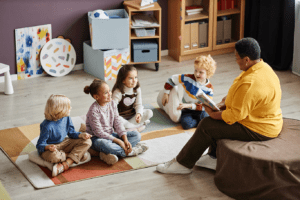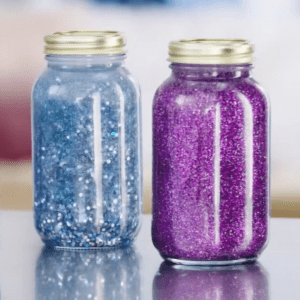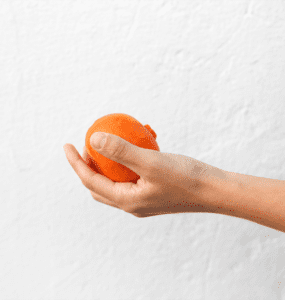Mindfulness is paying attention on purpose to what’s happening in the moment. Many people use it as a form of meditation, but everyone can practice incorporating mindfulness into daily routines and activities.
Practicing mindfulness involves intentionally focusing on just one thing at a time. It can be normal – especially at the beginning of your mindfulness practice – for your thoughts to wander to your To Do list, conversations you’re planning to have, or even an evaluation of how your mindfulness practice is going. Noticing these things, not assigning judgement to them, and letting them go is part of the practice of mindfulness. Sometimes practicing mindfulness (especially at the beginning) can feel uncomfortable because of the feelings that come up. That’s OK! Part of the practice is to acknowledge the less comfortable feelings and thoughts too.
Mindfulness is an important part of taking care of your mental health. It can help put space between your feelings and actions, which is helpful because strong feelings can often scramble good decision-making. You can incorporate mindful activities at home as a way of practicing mindfulness as a family.
Mindful Meals
Mindfulness involves paying attention to what’s happening in the moment, and mealtime or snack time is a great way to practice this with your children.
How to do it:
- Find the right time. Practice a mindful meal when you can take your time eating and you can be together without phones or other screens. The food doesn’t need to be fancy or elaborate. If your child enjoys trying new foods, it might be fun to practice with a new food. If not, using a fan favorite is a great plan.
- Name it. Let your children know when you’re going to practice mindfulness. If your child enjoys games or competition, frame it as a challenge!
- Explore the mind-body connection. Food and nutrition are important to mental health because our body and minds are connected. How and what we eat can change how we feel. Think with your child about how their bodies feel before, during, and after eating mindfully.
- Use all 5 senses: Talk about what you both notice using your 5 senses.
- Sight: What do you notice about this food? How does the color or texture make you feel about trying it?
- Smell: What do you notice? Does this smell remind you of anything?
- Touch: What do you notice about the temperature of the food? What do you notice about the texture? Is it chewy, crunchy, scratchy, or smooth?
- Sound: What kind of sounds come from our chewing of this food? Is there a crunch or snap or slurp when we eat it?
- Taste: What do you notice right away? Is the food sweet, salty, sour, bitter, savory, or a combination? Does the taste change as you chew?
Creating a Family Self-Care Plan

Self-care is an important part of maintaining mental health because it involves giving yourself the time and space to nourish your mind, body, and heart with activities that make you feel connected to yourself and your loved ones. Making a family self-care plan is a great way to model for your children that self-care is important while nurturing your connection with one another.
Your family self-care plan will include activities that you can do as a family to strengthen your connections, reflect on challenges and celebrations, and have fun together!
How to do it:
- Get everyone together. Make time for everyone in your family to get together to talk about their plan. This might be on a walk, at a meal, or at another time when everyone can be present and not on their phones. Everyone’s ideas are important here!
- Think about the WHEN. When will you use these activities? Some families might decide to do 1 or 2 activities on a set day every week or once a month. Others may choose to use it when they notice they’ve been too busy to spend quality time together. Figure out what works for your family.
- Think about the WHY. Why is spending time together important to your family? How do you want to feel after doing your self-care activities?
- Think about the WHAT. What do you want to do together as a family to connect? You’ll be more likely to stick to a plan that is realistic, in line with what your family already enjoys, and simple. You can consider activities that balance the mind, body, and heart:
- Nurturing the mind: This might include activities like learning something new together or playing a challenging game together.
- Nurturing the heart: This might include activities and conversations that give everyone a chance to express their thoughts and feelings. Consider having a daily family check-in conversation or making a Mind Jar.
- Nurturing the body: Physical activities are a great way to connect, destress, and have fun. This might include taking a walk together or trying a new sport. Spending time outdoors is great for mental and physical health.
Write it down, and keep it where you can see it! This will keep your family accountable to the plan you’ve made, and will also remind you of all the ways you can take care of one another.
Calm Corner

Everyone needs to learn how to self-regulate, or calm themselves down when they’re feeling strong feelings. A Calm Corner is a designated space for your child to practice different self-regulation strategies, or coping skills.
How to make it:
- Space it out: Calm Corners don’t need to be elaborate – consider a small space in your home that is typically quiet and free from screens. This could be a comfy chair in the living room, or some floor space in a closet or bedroom that’s big enough to sit. Older children will likely want more privacy, so consider a space that allows for that.
- Make it comfy and calm: To make the space inviting but not overwhelming, keep it simple, and involve your child in planning it. The space should be special, and not just another place for your child to play or keep toys. You might consider adding things like:
- A favorite stuffed animal, blanket, or pillow
- Books and coloring or journaling materials
- Fidgets or quiet toys, like our Mind Jar, Squeeze Stress ball, Rubix cube, or fidget spinner
Teach your child to use it:
- Using a Calm Corner is different than a timeout, because it shouldn’t be used as punishment, but rather as a way of encouraging your child to take space to calm down and practice their self-regulation skills.
- Introduce it by starting to use it together with your child when they are upset: use the materials together, read a book, or snuggle. This can be especially helpful for children under age 5, who may not be able to consistently handle strong feelings alone.
- After some practice together, suggest they use the space when they’re beginning to get upset. You can say something like, “It looks like you’re feeling pretty disappointed. Do you want to go to your Calm Corner to help yourself calm down?”
- Help your child notice what they did to calm down by asking reflection questions once they are calm again like, “Does your body feel any different now that you had some time to snuggle with your bear?” or “I’m noticing that you’re not yelling anymore. What did you use in the Calm Corner to help yourself feel better?”
- When they’re using it successfully, offer lots of encouragement! You can say things like, “I’m so proud of you for noticing that your body needed a break” or “You were so mad, and figured out a way of calming down so we could talk again. That was awesome!”
- Consider making a Calm Corner for yourself too, so that your child learns that grownups notice and take care of their feelings, too.
Calming Tools
Mind Jar
In this craft, the jar represents our hearts or minds, and the glitter represents our thoughts and feelings. Shaking up the jar is like feeling a strong feeling: our thoughts and feelings can be swirling, confusing, and chaotic. When we set the mind jar down and let it rest, the glitter will slowly settle at the bottom and the water will become clear again. When we take time to be still, take deep breaths, and focus on watching the glitter fall, our bodies get a chance to settle and our hearts and minds can feel clear and calm again.

What you’ll need:
- A clean plastic or glass jar or bottle with a tight fitting lid
- Water
- Washable white or clear liquid glue
- Glitter, sequins, beads, or other small objects
- Hot glue to seal the jar (optional)
How to make it:
- Fill the jar about 1/3 full with glue. The more glue you add, the longer it will take for the glitter to settle.
- Add glitter or other objects.
- Top off the bottle with water.
- Seal the jar.
- Shake it up!
Keep the mind jars accessible for your child, and encourage them to shake it when you notice they are starting to feel a strong feeling. Help them reflect on how taking deep breaths changed their mood, thoughts, or feelings.
Squeeze Stress Ball

When we feel stress or strong feelings, our bodies often tense up and we may feel the need to move in some way, like by clenching our fists, hitting or throwing something, or pacing. Stress balls are one tool that children can use to direct this physical energy: rather than throwing something, for example, they can try squeezing a stress ball when they need movement.
What you’ll need:
- An uninflated balloon (not a water balloon)
- About 8 oz of a filler: table salt, dried lentils or beans, or uncooked rice
- A funnel (optional, but helpful)
How to make it:
- Stretch the opening of the balloon as wide as possible, or use the funnel.
- Fill the balloon, leaving the neck clear of filling.
- Tie the balloon.
- Squeeze!
You may want to set some rules for using the stress ball, such as not throwing it at anyone or anything. Keep it accessible for your child to use when they need to squeeze out some extra energy.
